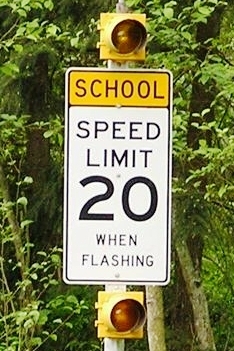A new nationwide study, released by Driving-Tests.org reveals that teenage drivers are not only aware of the dangers involved with driving a motor vehicle, they are surprisingly insecure about their own limited ability to manage those risks.
What do teens and younger drivers think about the risks associated with driving? It's an interesting question, and it is one explored in a nationwide survey conducted by Driving-Tests.org.
Preliminary data compiled by the Governors Highway Safety Association shows that traffic fatalities among 16- and 17-year-old drivers increased by 19 percent during the first six months of 2012. However, other data shows that fewer teens are getting their driver's licenses. A study that was done by the University of Michigan notes that 30 years ago, eight in 10 Americans ages 17-19 had a driver's license. Today that number is six in 10.
Personally, I am of the generation that could not wait to drive. I lobbied relentlessly to get behind the wheel when I was 13-years old, with not great results. These days, my 16-year-old nephew in Ohio is not all that eager to get his learner's permit and some nieces and nephews didn't get their licenses until in their 20s, although living in New York City might have had something to do with that.
The survey was an online survey of open-ended questions with a 140-character limit that was completed by 1,421 participants. At least 75 percent of respondents were between the ages of 14 and 24; at least 50 percent of participants were female and at least 30 percent were male.
These responses come from those between the ages of 14 and 24. Driving-Tests.org was launched in 2010 and is owned by Elegant E-Learning, Inc., a software development company based in Canada.
When asked what they thought was the most dangerous thing to do when driving, 69 percent said texting; 8 percent said talking on a cellphone; and 9 percent said drinking and driving.
In terms of their biggest fears about driving, 33 percent mentioned being involved in an accident, crash or wreck; 20 percent said the unpredictability of, and interaction with, other drivers; 17 percent said parallel parking, turning, highways and driving around trucks; 7 percent cited injuring a passenger or killing another person; 5 percent said getting lost or feeling confused and another 5 percent said "dying."
But there were some aspects of driving that excited them and 28 percent said it was freedom and independence; 26 percent cited access to transportation; 14 percent said "I am not excited to drive, I am fearful;" and 10 percent mentioned getting to work, going to school and helping to transport family members.
Asked to identify the most challenging aspect of learning to drive, 35 percent said it was grasping advanced driving skills, such as highway driving, being around trucks, turning and parallel parking; 22 percent cited understanding the words and language on the driver's test; 14 percent said developing the right driving skills; and 15 percent it was feeling nervous and overcoming emotional pressure.
While parents are supposed to be role models and get involved with helping their children learn to drive, many of those surveyed witnessed some behaviors that should not be emulated.
When asked what was the most dangerous thing they had seen their parents do, 42 percent said it was texting; 19 percent said using a cellphone, 18 percent cited failure to focus on the road due to distractions such as applying makeup, smoking, adjusting controls or eating; 13 percent they witnessed safety violations, such as not wearing a seatbelt or driving with their knees; and 9 percent said their parents had engaged in aggressive driving. So, parents, just remember that you are being watched.
-- Cheryl Jensen, Motor Matters

 3. “School zone” speed limits are back. The long-dormant lights of the speed limit signs near schools in your area are blinking again, in most areas between 7:30-9:30 AM and again from 2-3:30 PM. That means a stretch of road that is usually 35-45 mph might at those times become 25 mph (or less). The combination of reduced speeds and lines of cars and buses turning into schools makes for a longer trip to work, so factor that into your departure time. It’s not worth a ticket, and certainly not worth endangering kids on their way to school.
3. “School zone” speed limits are back. The long-dormant lights of the speed limit signs near schools in your area are blinking again, in most areas between 7:30-9:30 AM and again from 2-3:30 PM. That means a stretch of road that is usually 35-45 mph might at those times become 25 mph (or less). The combination of reduced speeds and lines of cars and buses turning into schools makes for a longer trip to work, so factor that into your departure time. It’s not worth a ticket, and certainly not worth endangering kids on their way to school.